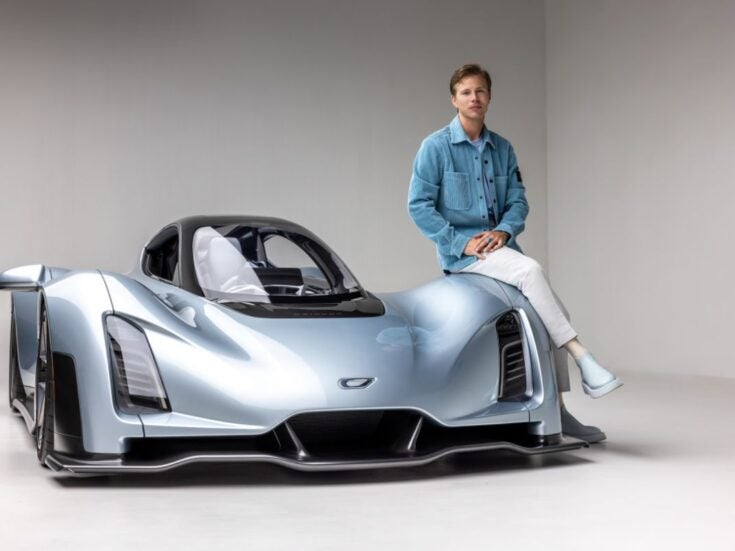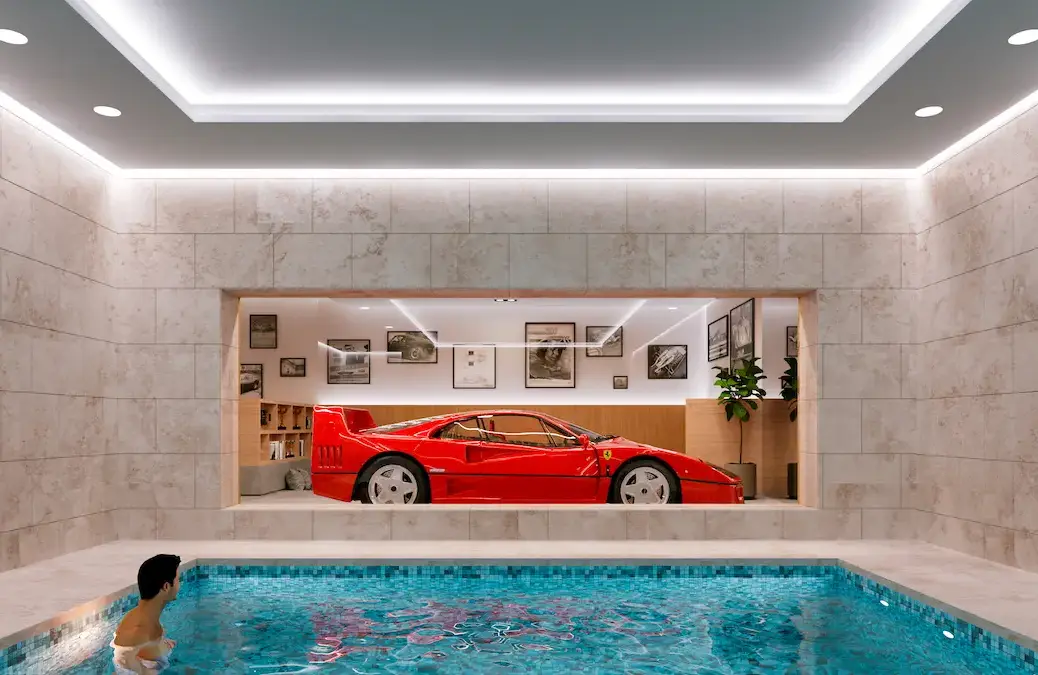
Classic cars have traditionally been relegated to spaces that fall far short of the glamour of the vehicles themselves. But today, these prized collections – and their souped up supercar cousins – are gaining prominence in luxury garages and high-end home design.
While the concept of a personal showroom isn’t new – Ralph Lauren, owner of one of the world’s most extravagant collections, displays his $300 million fleet on all-white raised platforms in a custom-built garage in New York – a new generation of aesthetically-minded collectors is championing architecture that brings the car inside.
[See also: The world’s most extravagant personal car collections]
In the ostentatious abodes of these ultra-wealthy petrolheads, the car is given the same spotlight as an Old Master in an aristo’s stately pile.
Such is the demand, that luxury car manufacturers have branched out into branded residences with custom elevators and integrated display solutions. Mercedes Benz is the latest to enter the fray, announcing a Dubai development earlier this month.
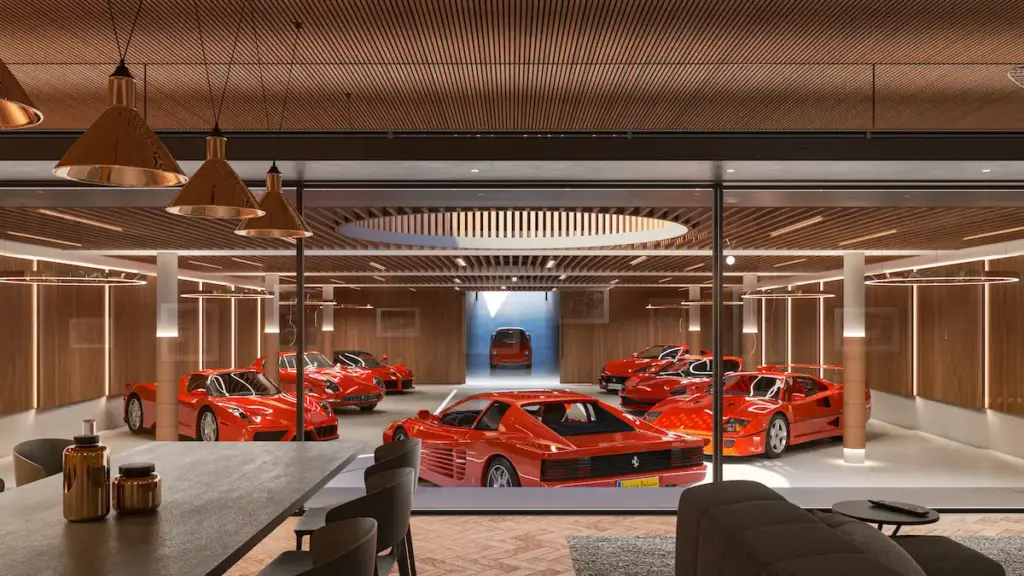
The changing face of car collectors
‘In the past people who collected cars weren’t so interested in interior design,’ says Jonathan Clark, founder of London-based Garage Deluxe, a leader in the luxury garage space. ‘A lot of old school collectors were very happy to keep their cars in leaky old barns, and that was part of the attraction. Old classic cars in old leaky barns sounds like a bit of a cliché, but it’s quite often how people do it.’
[See also: Expert classic car advisers]
Yet this demographic is changing. Whether investing for financial returns or personal passion, today’s car collectors want the thrill of admiring their vehicles in the comfort of their homes. ‘It’s like a private art collection except one that you can take out and enjoy as well,’ says Clark.
One of Garage Deluxe’s projects is the ultimate basement den where the client’s Ferrari F40 is displayed alongside a subterranean pool, the car dominating the swimmer’s view through a large glazed screen. The car’s showroom doubles as a living area, with a sunken seating area that features a drop-down screen and a bar. The integrated shelves are backlit to showcase the client’s motoring and racing memorabilia collection.
‘What we’re more about is, instead of treating it just as storage, we’re creating a uniquely luxurious environment that you can relax in and appreciate your cars,’ Clark explains. ‘Then you can entertain friends or family or business colleagues in a lounge area that has a great view of the cars, or you could treat it as a gallery, much in the same way as you would display art and arguably rare classic cars.’
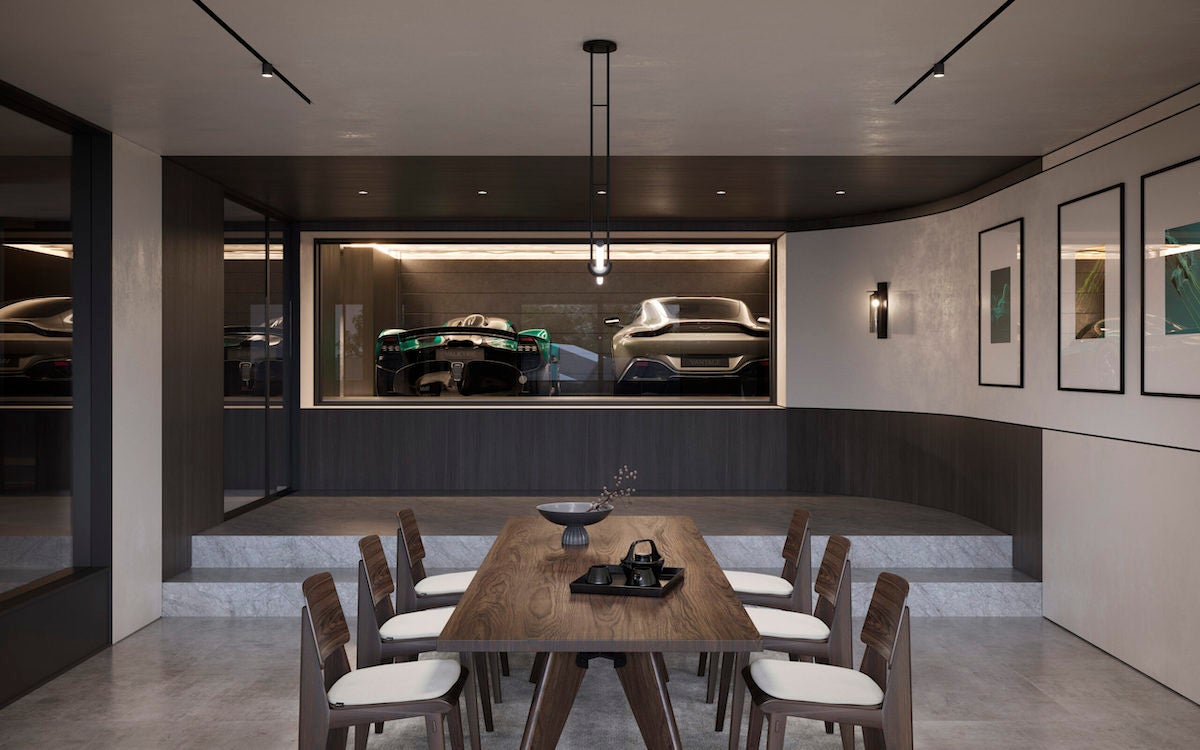
In 2019, Aston Martin launched its Automotive Galleries and Lairs service, specifically to design spaces to showcase a client’s luxury car collection.
Aston Martin’s Chief Creative Officer, Marek Reichman, and his design team have worked on several design projects in private residential developments, including Nº001 Minami Aoyama, the first Aston Martin designed home in Japan.
The property incorporated an automotive gallery that is visible from the entertaining areas of the property. Aston Martin’s first venture into Asia followed projects in the United States, including the Sylvan Rock private residential estate which has a subterranean gallery-style room to display up to three cars.
Luxury garages: more than just looks
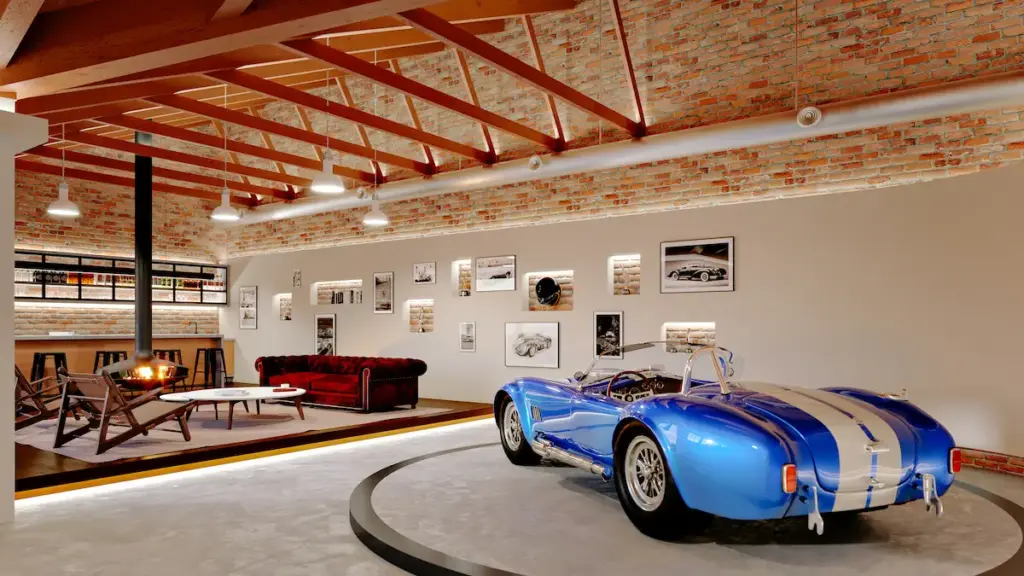
Like the cars themselves, the interiors aren’t all about looks. Heritage cars in particular require delicate handling – on and off the road. The temperature and humidity in these designated showrooms are carefully controlled to ensure the car is kept in the right conditions. There are special considerations to for fittings and furnishings; anything that could double as potential hazards is voided.
‘You don’t want to have anything angular or sharp that you’re going to potentially drive your car into when you’re manoeuvring it around,’ Clark says. ‘It needs to be well planned, so if you have any columns in there you need to have them in the right places.’
[See also: Why this petrol-fuelled SUV is a glimpse into Aston Martin’s all-electric future]
Finishes too have to be factored in. ‘Older cars drop oil, so you have to be mindful of that,’ Clark says. ‘Lots of showrooms have timber floors, but they are possibly more suited to modern cars.’ Polished concrete and resin floors are most practical as they can be washed down easily.
‘It might be you’ve got a wash bay in the space or a maintenance area in which case you want to have something very durable like a resin floor which will withstand pretty much anything,’ Clark explains. Lighting is key, Clark says, as is ventilation: ‘You’ve got to get rid of the fumes’.
Driving the branded residences boom

In recent years, architecture and the auto industry have become increasingly entwined, with several high-end car brands partnering with developers to create residential apartments.
Just this month Mercedes-Benz and developer Binghatti revealed plans for a 341 metre-skyscraper in Dubai, the car company’s first branded residential tower.
Mercedes-Benz Places is slated to be one of the tallest in the city and will comprise 225 apartments along with restaurants, a gym, lounges, exhibition spaces and, naturally, ‘VIP parking’.
It is the latest such opening: luxury car manufacturer Bugatti is creating a 42-storey skyscraper with Binghatti in Dubai, while Miami has become a hotspot for car branded residences, lead by developer Gil Dezer (himself an avid luxury car collector).
Dezer is behind Bentley’s soon-to-be 61-storey skyscraper near his Porsche Design Tower, which he worked on with Sieger Suarez Architects.
The Porsche Design Tower features a car lift known as the Dezervator that transports cars (and their passengers) to the resident’s personal glass-ensconced sky garage within their apartment. The patented Dezervator will also feature in the Bentley Residences, bigger and faster, Dezer says. The units’ luxury garages will also accommodate three or four car garages (the penthouse, with a guide price of $70 million, has room for 14 vehicles).
Gil Dezer tells Spears the idea behind these car-branded residences is to place cars at the forefront ‘so you can actually appreciate your automobiles from the living room as if they are pieces of art.’
The concept for a sky garage in your apartment, where passengers can walk from the driver’s seat to sofa, came from Dezer’s own experience. He worked on six Trump-branded towers and later moved into one of the apartments he built where the blueprint of his later designs was born.
‘It’s on the first three floors of the building, but I made it adjacent to the garage and so I come in from my garage into my apartment. All my friends were coming in saying, “this is brilliant. We need to have this, we need to be able to park our cars in front of our apartment”. And that was basically the inspiration for it [the elevator] and for the towers.’
Initially built with supercar enthusiasts like himself in mind, Dezer says the concept has also appealed to UHNWs who crave privacy.
‘That was our concept initially, it was to create this really cool environment where the car is inside your unit, you get to look at it and enjoy it.
‘What really happened was something we were not expecting. Because our condominiums are basically homes in the sky, having a garage, having swimming pools on the balcony, it’s really like a family home. And so what we learned was a lot of people bought these units, not because they care about seeing their car in the living room, but for the privacy and security of coming and going through the building without anybody seeing them.’
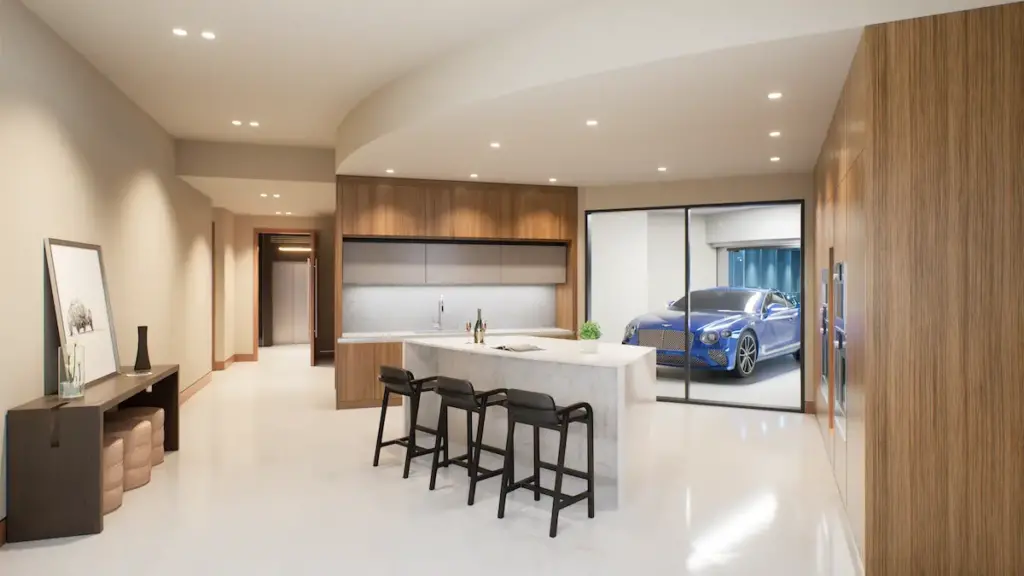
But car fans are still a big part of the building.
‘We have several guys who bought a $7 million apartment and have two $25 million cars.’ Dezer says, who counts a Bugatti Chiron, a Porsche 918 and a McLaren Speedtail as part of his collection.
[See also: Most expensive Ferrari ever sold at auction: 1962 330 LM/250 GTO fetches $51.7 million]
In keeping with similar projects, the Bentley Residences Miami takes inspiration from the iconic car brand and its heritage. The facade, for instance, features Bentley’s diamond effect through triangulated glass panels that are pushed in three inches and set in different directions to make the glass sparkle like a diamond.
And, again, looks are not the only factor – materials are important. While residents can design the walls of the luxury garage, the structure must follow a strict fire-regulated, health-and-safety-approved design.
‘We went to the fire department and said, “we want to take these cars up in the middle of the building” and they said, ‘”no way in hell are you putting a car full of gasoline on the 50th floor of a building, it can cause an inherent explosion…”.’
The Dezervator is so fireproof, ‘the car can sit in there, burn for two hours and you have all the time in the world to get out of the building,’ says Dezer.
Dezer says if the appeal is there for car-branded residences he’ll keep building these luxury personal showrooms in the sky. With hypercars and supercars hugely desirable and increasingly profitable, bespoke display spaces are only likely to grow in demand.

